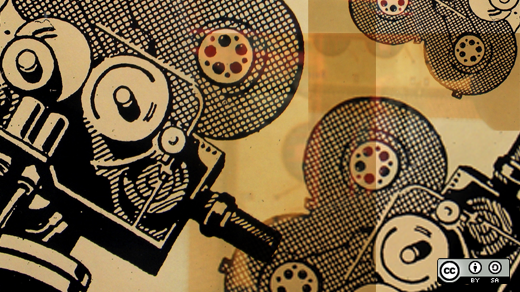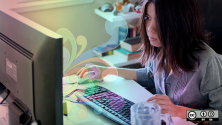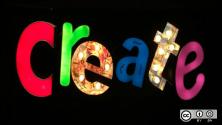As a nonfiction filmmaker, I have made over nine films, all under open licenses. But that choice always comes at a cost. It's tricky, if not impossible, to release a film under an open license if the film's copyright owner does not fully own the footage used. Films often purchase rights for media produced by others to be able to use in their work legally. As my films are mostly in endangered or low-resource languages with little or no pre-existing media, the option for purchasing existing media is often out of the question.
On the other hand, film productions often record hours of footage and audio but only use a small percentage of those in the film. Footage that might not have an immediate use for a film's production house can be useful for others. In my case, many interviewed marginalized communities have a moral ownership over the footage. But researchers and others who interview them do not always provide communities with direct and open access. For these ethical and practical reasons, it is a good idea to share footage and the film under an open license and inform the communities interviewed or featured.
There are many reasons filmmakers cannot release films under an open license, but this post is for those who somehow can. I often imagined what the open source equivalent would be for films that adhere to the Openness philosophy. Enter "Open Filmmaking," a framework that encourages releasing the source code of a film, i.e., footage under open licenses, and actively uses other practices such as open source software and open multimedia resources.
In my two recent documentary film projects, "The Volunteer Archivists" and "Nani Ma," I utilized media with open licenses and various open source software (FLOSS). The films explore the areas of citizen science, archiving public domain text, documentation of oral history, and the use of open licenses and open source, as well as volunteerism.
The Volunteer Archivists
"The Volunteer Archivists" follows the sixteen-year journey of digital archiving of texts by a volunteer-led group called Srujanika from Bhubaneswar in the Indian state of Odisha. Founded in 1983 by a scientist couple, they have managed with a small workforce to archive over 10,000 volumes of books, magazines, and other periodicals published in the Odia language since the early 1800s. They now host the archived texts online at OdiaBibhaba.in. Their original work includes growing a citizen science community over two decades to promote popular science education outside textbooks, publishing a monthly magazine called "Bigyana Tarang," and several illustrated publications. As scanners became more affordable, they began the process of archiving in 2006, starting with the "Purnnachandra Odia Bhashakosha," a seven-volume lexicon from 1930-1940 that powers the Odia Wiktionary. Srujanika also contributed to the Wikimedia movement by localizing computing terms into Odia and creating a manual for Odia computer translation style and convention. Linux distributions and FLOSS, like LibreOffice, were localized in Odia because of their effort.
Nani Ma
"Nani Ma" is based on oral history that was never recorded in audiovisual media, narrated by the late Musamoni Panigrahi in an early 1900s register of the Baleswari/northern dialect of Odia. Musamoni was my grandmother, and it was quite late by the time I realized how unique her stories, songs, and narration style were. The register, storytelling, and overall oral history are important pieces of history as they were strongly influenced by the Orissa famine of 1866, a direct impact of the British colonization of India.
The entire footage and supporting multimedia files used in "Nani Ma" are now available on the Internet Archive under a CC BY-SA 4.0 License, and the film will be available to the general public after screening in film festivals.
In addition to using openly-licensed media and releasing the production media (video footage, audio recordings, still images, and promotional graphics) from these two films under open licenses, they also saw the use of several FLOSS. Some of the software includes Audacity for audio editing and codec conversion, HandBrake for video conversions, extensive use of Inkscape and GIMP, respectively, for all vector and raster image editing, Scribus for typesetting documents, and typefaces under Open Font License (available on Google Fonts and other places). I also used openly-licensed images from Wikimedia Commons and audio from freesound.org.
Open Filmmaking can be fun and challenging at the same time.
Wrap up
Recommendations based on technical, ethical, and licensing constraints:
- Most open source software often comes with beta releases which are many steps ahead of their stable releases. While they can add a modern flare to work, they aren't tested like the stable versions are. Use the stable version for mission-critical projects.
- Save your work-in-progress frequently.
- If you're new to open source creative tools, then budget time to learn new software.
- Budget time to create metadata. Audiovisual media without metadata is hard to find.
- Upload media publicly if you have consent from the people featured. B-rolls could sometimes include private data in the audio (as well as in the video). Redact such information before uploading. Uploading raw and unedited video featuring people always needs scrutiny.
- Use a Creative Commons license for releasing audiovisual content you own. But the license spectrum can be confusing. Use a tool like License Chooser to evaluate what license makes the most sense.
- Use open codecs and other open multimedia resources while preparing files for uploading.
Lastly, finding a public hosting platform that shares the Openness movement's values can be intimidating. Internet Archive is my personal choice as it is helpful to create Collections under which files of different kinds can be uploaded (see "The Volunteer Archivists" and "Nani Ma" collections). Happy open-filmmaking!







Comments are closed.